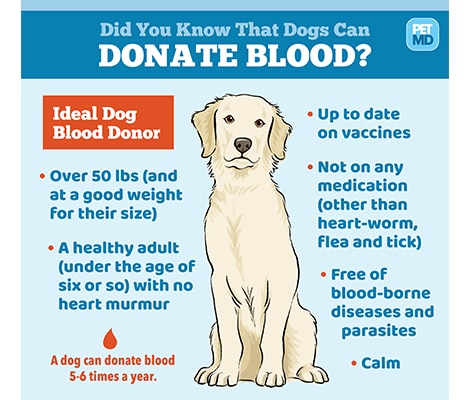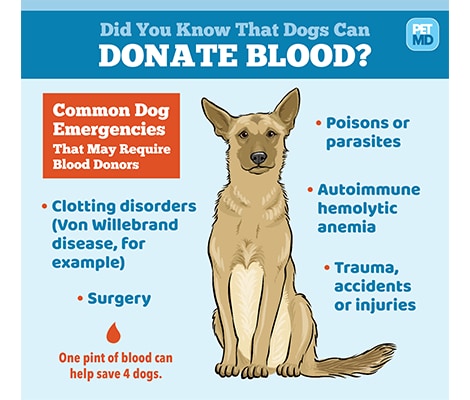Dog Blood Types and Dog Blood Donation
Is there really such thing as a blood transfusion for dogs? Yes, dogs suffering from severe blood loss or blood diseases can receive blood transfusions from another healthy dog to help them recover.
But matching them up is a little more involved since there are dog blood types than in people, and the types are more complex.
Here’s everything you need to know about dog blood types and how dog blood transfusions and donations work.
Do Dogs Have Different Blood Types?
Yes, they do. In fact, over a dozen different dog blood types have been found so far, and we’ll probably continue to find more types with more research.
Blood types in dogs are genetic with complex inheritance patterns. Each blood group is inherited independently, which means that a dog could have any combination of the 12+ blood groups.
This creates variability in which blood types are most common depending on geographic area and breed.
Even though there are many dog blood types and possible combinations, the one called “dog erythrocyte antigen 1” (DEA 1) is the most medically important.
Some dogs are negative for DEA 1, but if they’re positive, they can have one of two forms—DEA 1.1 or DEA 1.2.
What’s the Best Blood Type for Dog Blood Donations?
Dogs that are negative for DEA 1 are preferred for donating blood because their blood can be safely transferred to dogs that are negative or positive for DEA 1.1 or DEA 1.2.
However, DEA 1 negative dogs aren’t truly “universal donors” because a dog may be positive for another blood type that might cause an issue.
To make sure there won’t be a serious immune reaction to any of a donor dog’s blood types, the veterinarian will do another test called “crossmatching.” This test checks the overall compatibility of donor and recipient blood.
After confirming DEA 1 blood type and running a crossmatching test, a veterinarian can typically determine which type of blood will be the most successful for the dog receiving the transfusion.
What Are the Other Qualifications for Dogs Donating Blood?
While in a true emergency, theoretically, any dog could donate blood, some dogs are better blood donors. We already know that vets prefer a DEA 1 Negative blood type, but here are a few more qualifications that they look for.
The ideal dog for donating blood is:
-
Over 50 pounds (and at a healthy weight for their size; larger dogs can donate a larger volume of blood more easily and frequently than smaller dogs)
-
Up to date on their vaccines
-
Healthy (with no heart murmur)
-
Not on any medication
-
Free of infectious disease, parasites and blood-borne diseases
-
Calm (able to sit quietly for 10-15 minutes while blood is being collected)
-
DEA 1 Negative
If the DEA 1 blood type is compatible and there’s no immune response seen with the crossmatching tests, then it’s safe to go ahead with the dog blood transfusion.

What Dog Health Issues Require a Blood Transfusion?
A dog might need a blood transfusion to replace blood after severe blood loss from either surgery or trauma.
There are also some diseases (e.g., Von Willebrand disease) that can cause bleeding and serious blood loss, which can be treated with a blood transfusion.
Other diseases damage and destroy blood cells, so a blood transfusion can help replace these and allow the dog to feel better.
For dogs with any of these conditions, getting a blood transfusion from another dog can be life-saving.

What’s the Process for Dog Blood Transfusions?
Here are the steps for finding a match and what will happen during the actual blood transfusion.
Finding a Dog Blood Donor
There are two ways that veterinarians can source blood for a transfusion.
They can pull blood from a willing canine donor or contact a pet blood bank and request blood.
Vets can order from national pet blood banks, and many local emergency and specialty hospitals have their own pet blood banks, too.
Dog Blood Type Testing
The blood types of both dogs must be matched before the transfusion.
The vet will take a sample of blood from the dog getting the transfusion to check for an immune response to a sample of blood taken from the donor dog, and then this process is reversed.
This is an important step because giving DEA 1 Positive blood to a dog that’s DEA 1 Negative can cause the immune system to attack the newly transfused blood cells—reducing their effectiveness and potentially causing serious allergic reactions.
After both dogs are blood typed for DEA 1, then crossmatching tests are run as well.
The Dog Blood Transfusion Process
Whether it’s going to a blood bank or directly to a waiting dog, the blood is collected and kept in special bags that keep the blood from clotting.
When it’s time to give a dog a blood transfusion, these bags are hooked up to an IV (intravenous) fluid line with a special filter built in. The blood transfusion is given directly into the vein through the IV catheter.
The total dose of blood to be transfused is based on the dog’s size and how much blood they have lost. This is given over a specific time period, and the dog is monitored very closely to be sure they aren’t developing an allergic reaction.
For many health issues, a single blood transfusion is all that’s needed to help the dog recover. For some diseases where there is ongoing blood loss or destruction of blood cells, the dog may need repeated blood transfusions.
Fortunately, most dogs never need a blood transfusion, but for those that do, it can be lifesaving.
By: Dr. Aja Senestraro, DVM
Featured Image: iStock.com/andresr
Help us make PetMD better
Was this article helpful?
